When teaching painting classes, I always get interest from students who want to learn how to gesso their own canvas. Therefore, I have outlined the process of how to gesso canvas for painting in this article so that you can learn process as well!
You can also find my video guide below, where you can watch me gessoing canvas in action!
Gessoing Canvas Video Guide
How to Gesso Canvas – Step by step instructions
Step One: Prepare a piece of canvas
The first step I undertake in my gesso canvas prep. Is to cut out a piece of canvas that is of a desired size and will fit on my wood board. I then proceed to iron out the fabric. Although the act of gesso priming canvas, can in itself, get rid of the creases. I prefer to first press out the fabric with an iron, so that I can start out with a more smooth canvas surface.
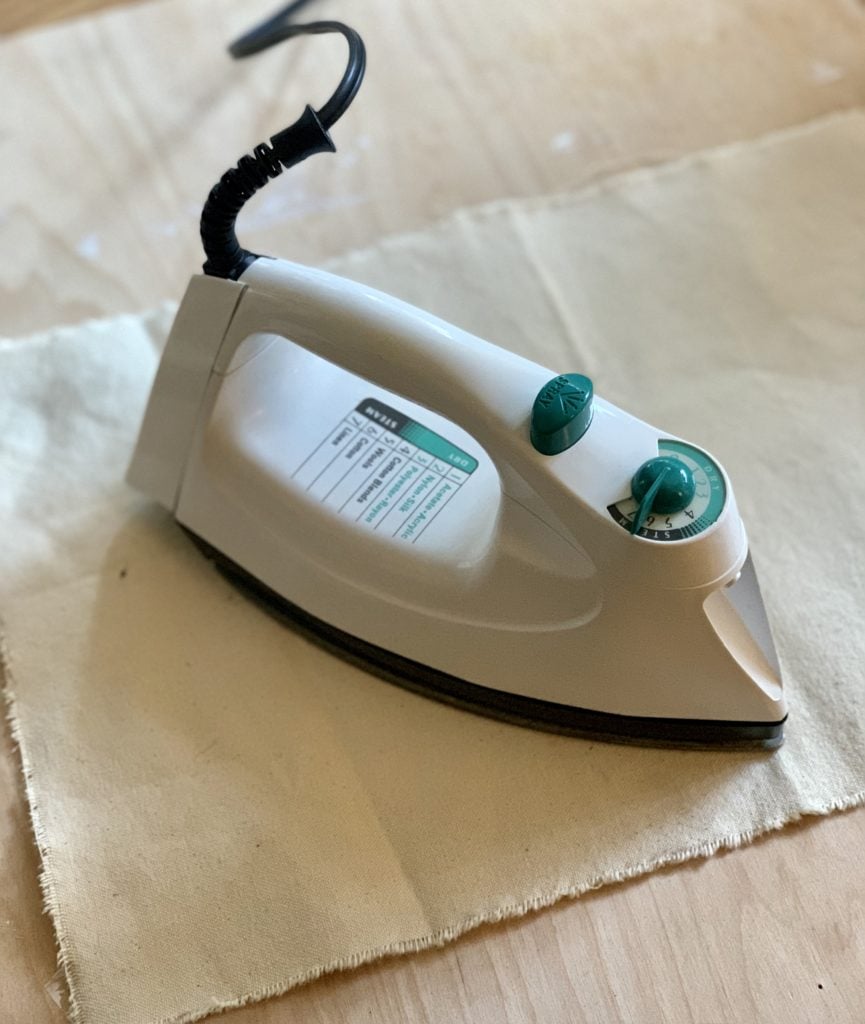
Step Two: Flatten out canvas on a wood panel
Secondly, I smooth out the canvas onto my board so that it is flat against the wood- being careful that there are not any straggling pieces of canvas string underneath (this will make your canvas slightly raised -so make sure it is flat!).
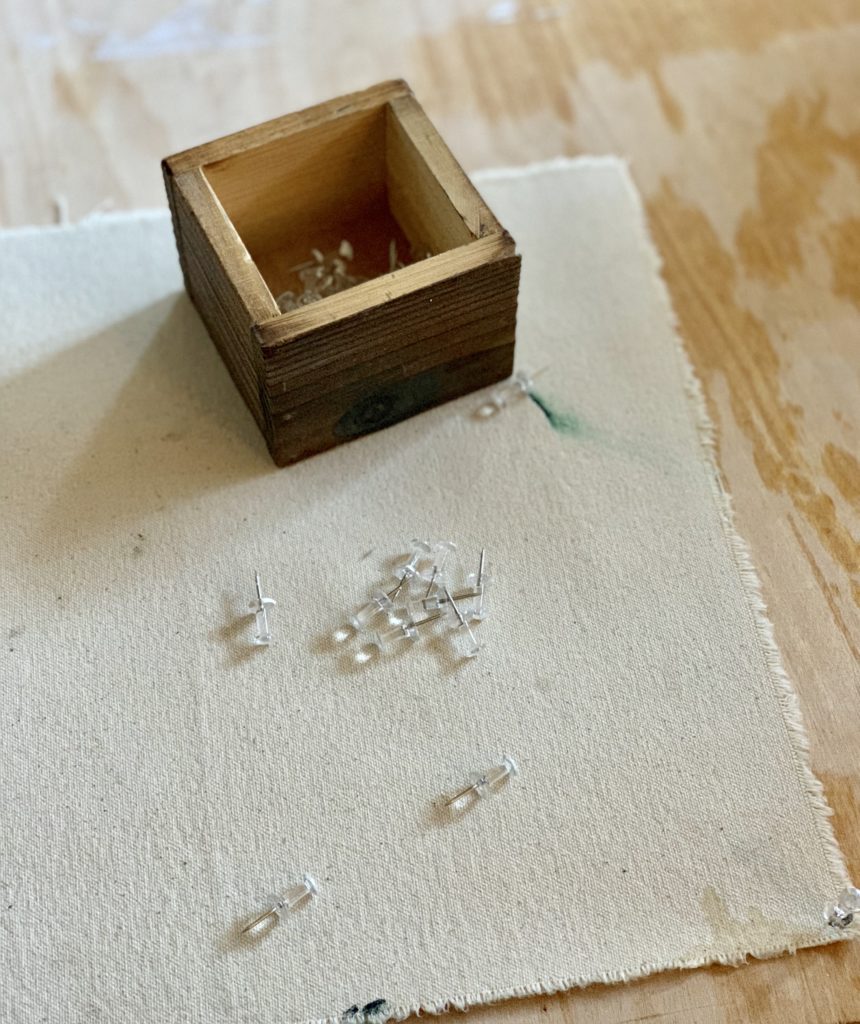
Step Three: Stretch out and secure canvas to wood panel
Take your push pins and place one in one corner of the canvas about 1/4 in from the edge. Place the second push pin in the opposite corner from the first—while at the same time pulling (but not too hard) the canvas so that there is slight tension so as to avoid it having creases.
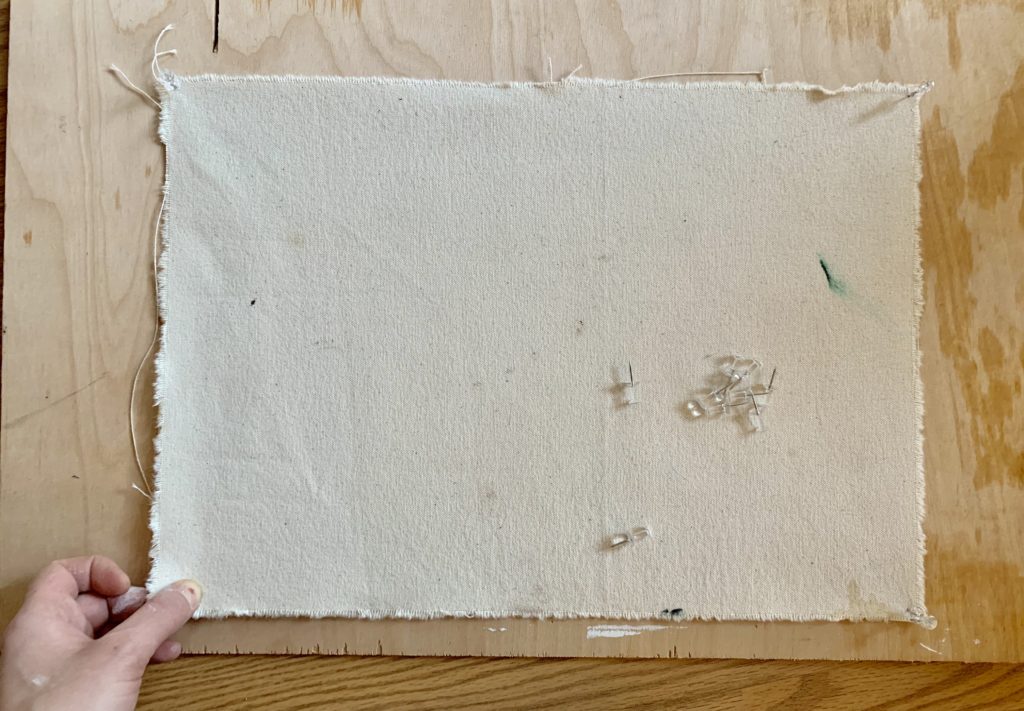
Place the next push pin in the next corner whilst pulling the canvas a little and the one after that in the opposite corner. Continue to follow this pattern of placing the push pins in the opposite place of your previous placement – this will help secure your canvas down and prepare you to gesso your canvas.
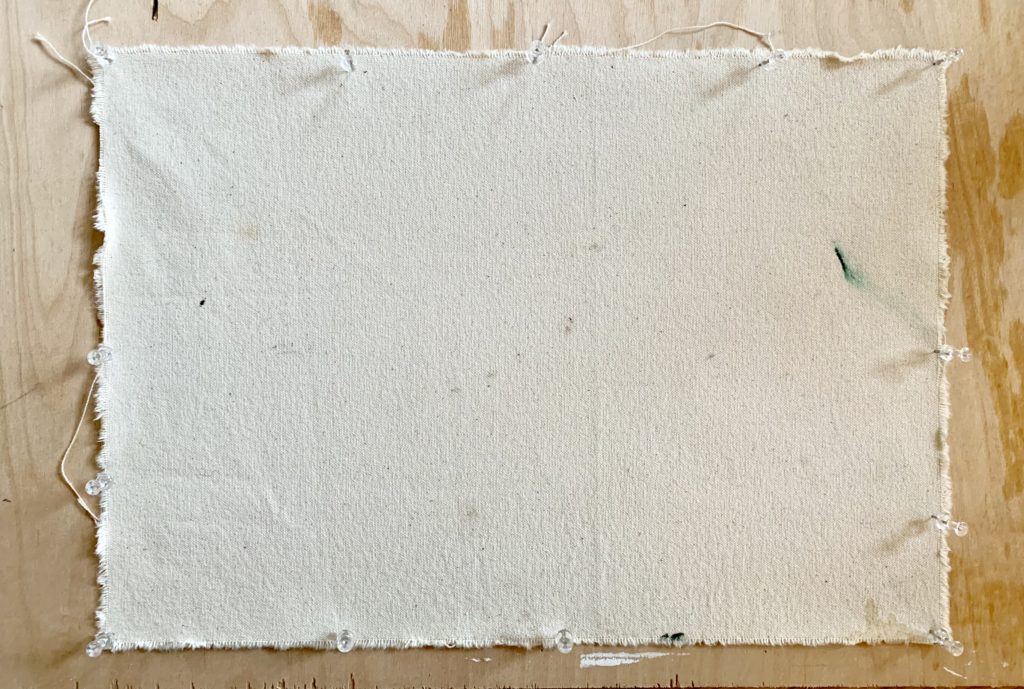
Step Four: Preparing gesso paint
Depending on what type of gesso you have, you will want to dilute it with water. The better the gesso, the thicker it will be and the more you will need to dilute it. You want it to have some thickness to it, but be fluid at the same time. It should have the consistency of a viscous soup. I most prefer to use a painting trowel to mix the water and gesso together in an aluminum pie tin.
Step Five: Begin gesso painting your canvas!
Place a dollop of gesso primer onto the center of your canvas and press it outward with your painting trowel. You want to press the gesso paint into the canvas as if you are trying to scrape it off the canvas—this way the primer will get into the ribbing of the canvas and give you a good first layer.
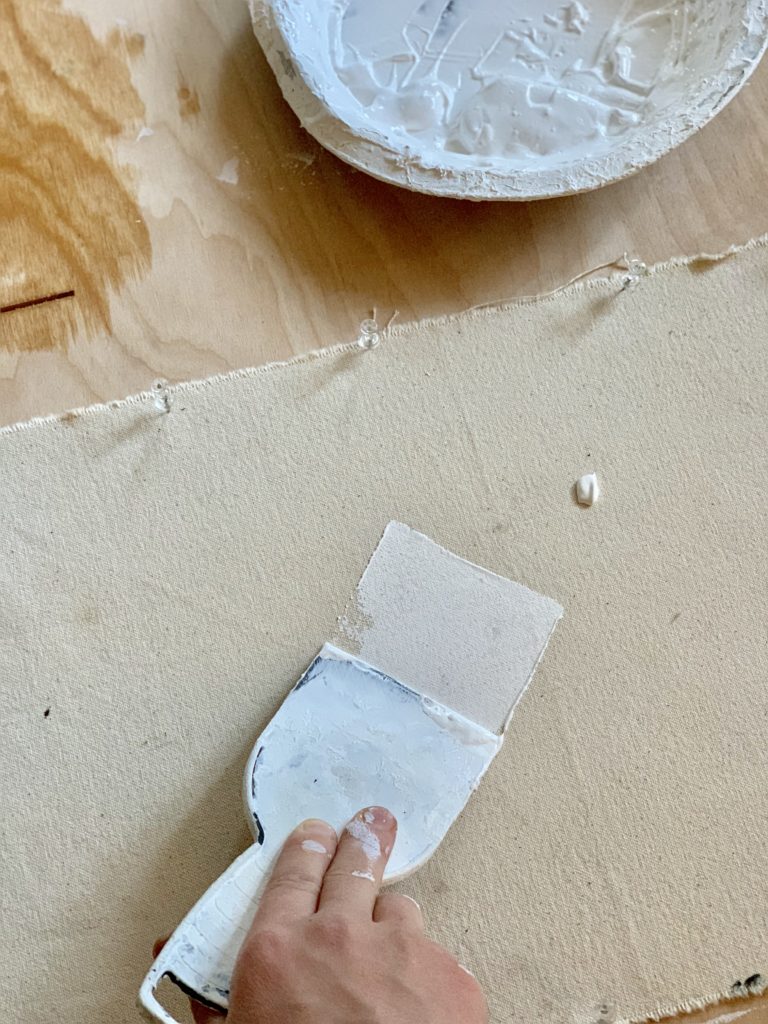
Continue to place more gesso primer as needed onto the canvas. Then continue to spread the primer out from the center of the canvas, towards the edges until the surface is covered. Let the canvas sit for 30 min. to dry before starting your next layer.

Step Six: Repeat step five of adding gesso primer
Repeat the step above two more times (giving yourself 3 layers). Be sure to let your canvas dry for 30 minutes in between each layer. Depending on what type of canvas you have, you may need more or less layers of gesso. Knowing how much you need is something that you will be able to tell by touching the surface—if it is so rough that it will take paint with difficulty then you will want another layer. Conversely, if it is too smooth, you will know for next time to use less gesso.
Step Seven: Let your gessoed canvas dry
When your freshly gessoed canvas surface is dry to the touch, you are ready to take out the push pins from your canvas and start painting!

What to do with your primed canvas
I hope this tutorial was helpful to you! Having a properly primed painting surface is so important for ease of painting, as well as for archival purposes. Now that you have your gesso painting in place and your primed canvas ready to go you are ready to start your oil painting!






10 thoughts on “How To Gesso Canvas – Step By Step Gesso Painting Tutorial”
Do you have a recipe to make your own gesso?
I do not have a recipe that I use myself – I purchase prepared gesso. However a good recipe/ list of ingredients one can be found here.
if I buy regular canvas wrapped around wood are they already painted with gesso Just starting out Thanks
Hi Kathy, Most pre stretched canvases are already gessoed. If it has a layer of white paint on it then it is gessoed. However, they tend to not be the best quality surfaces and be somewhat scratchy and rough making it harder to paint on. You could apply another layer of gesso to make the surface better.
However, there are good quality pre stretched canvases, they are of course just quite a bit more expensive.
Do you have tutorial about how to starch your prime canvas on the frame?
Hello Hedi – I do not yet have a tutorial on how to stretch canvas on a frame – perhaps at some point in the future I will. 🙂
does not it crack when it be folded?
After gessoing canvas it should not be folded as it just might crack. It is best to roll it instead 🙂
Can you use painters Canvas?
Yes you can! 🙂